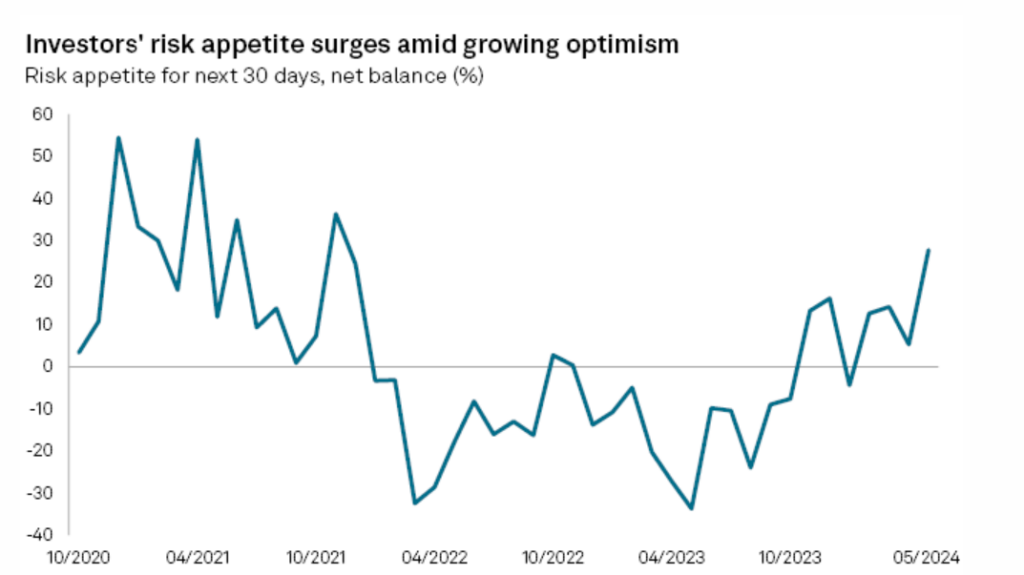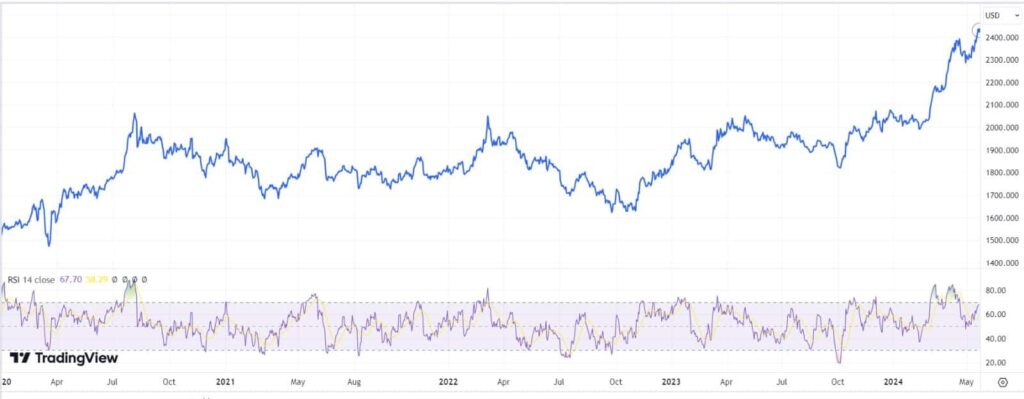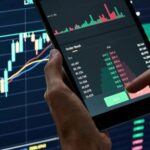Gold (XAU/USD) has reached record highs, hitting an intraday peak of $2,454.20 per ounce this week. This surge has been driven by expectations of interest rate cuts, escalating geopolitical tensions, and pivotal economic indicators.
Since 2020, rising uncertainties have turned investors towards gold as a safe haven, significantly boosting its value.
Interest rate cuts fuel Gold’s rise
The recent upside momentum in gold is primarily attributed to the market’s growing openness to interest rate cuts. Gold, being a non-interest-bearing asset, generally performs well when interest rates fall.
This sentiment shift followed April’s cooler-than-expected Consumer Price Index report, marking a notable inflection point for gold prices.
With March’s hot inflation prints behind, futures markets now predict two 25-basis point cuts this year, starting in September, according to CME Fedwatch tool
As a non-interest-bearing asset, gold becomes more attractive when interest rates decline, reducing the opportunity cost of holding it and increasing its appeal as a safe haven and inflation hedge.
Investor risk appetite on the rise
Investor risk appetite has surged, as indicated by an S&P Global survey, showing a 28% rise in May compared to just 5% in April, reaching its highest level since late 2021.

This increased risk appetite is reflected in the significant demand for gold as a hedge against market volatility and economic uncertainty.
Geopolitical tensions boost demand
Geopolitical tensions, including the unexpected death of Iran’s president and recent incidents such as a drone attack on a Russian refinery by Ukrainian forces and an attack by Houthi rebels on an oil tanker in the Red Sea, have increased demand for gold as a safe-haven asset.
Such uncertainties typically lead to a surge in gold prices as investors seek stability. This trend has been particularly evident in response to rising international conflicts and economic sanctions.
Central banks stockpile gold
Since 2020, central banks have aggressively purchased gold, buying nearly one-third of the total mined in 2023 and continuing this trend into 2024.
This strategy, driven by economic uncertainties and geopolitical risks, aims to diversify reserves away from the U.S. dollar.
Countries like Turkey and China have significantly increased their gold holdings. In contrast, global gold ETFs have experienced continuous outflows since October 2020, but gold prices remain resilient due to central banks’ strategic demand for physical gold.
Macroeconomic factors support prices
Recent economic data indicating a slowdown in the US recovery and potential easing of tight monetary policy have further boosted gold.
Broader macroeconomic factors, including China’s stimulus measures and improvements in the eurozone and UK economic data, are also contributing to the positive outlook for gold and other precious metals.
China, the largest consumer of bullion and industrial metals, has also influenced the upward movement in gold prices. Recently, China announced “historic” measures to stabilize its troubled property sector, providing additional support to the metals market.
Demand from Asia, particularly China, and heightened geopolitical tensions in Ukraine and the Middle East continue to support gold prices.
Gold price analysis

From January 1, 2020, to May 21, 2024, gold prices rose significantly, driven by economic uncertainties, the COVID-19 pandemic, and inflation.
Starting at $1,550 per ounce in January 2020, prices peaked at over $2,000 by August 2020, ending the year at $1,950.
The trend continued with modest gains in 2021, a 10% increase in 2022, and an 8% rise in 2023, closing the year at $2,430. By May 2024, prices stabilized at around $2,400 per ounce.
Overall, gold prices increased by approximately 55% during this period, with future volatility expected due to ongoing economic and geopolitical factors.
Looking ahead, gold prices are expected to remain volatile with potential upward momentum, influenced by ongoing economic and geopolitical factors.
Disclaimer: The content on this site should not be considered investment advice. Investing is speculative. When investing, your capital is at risk.







